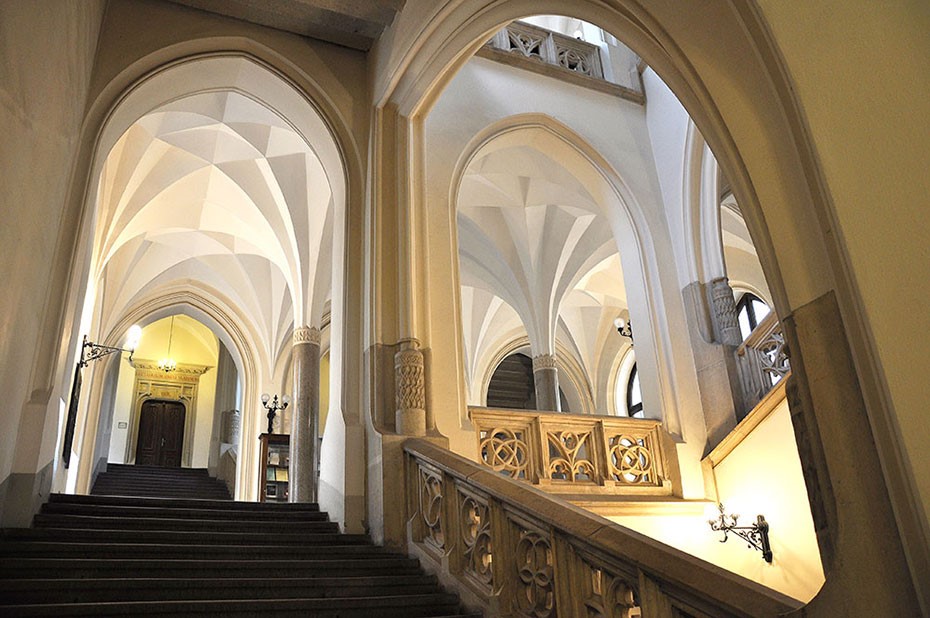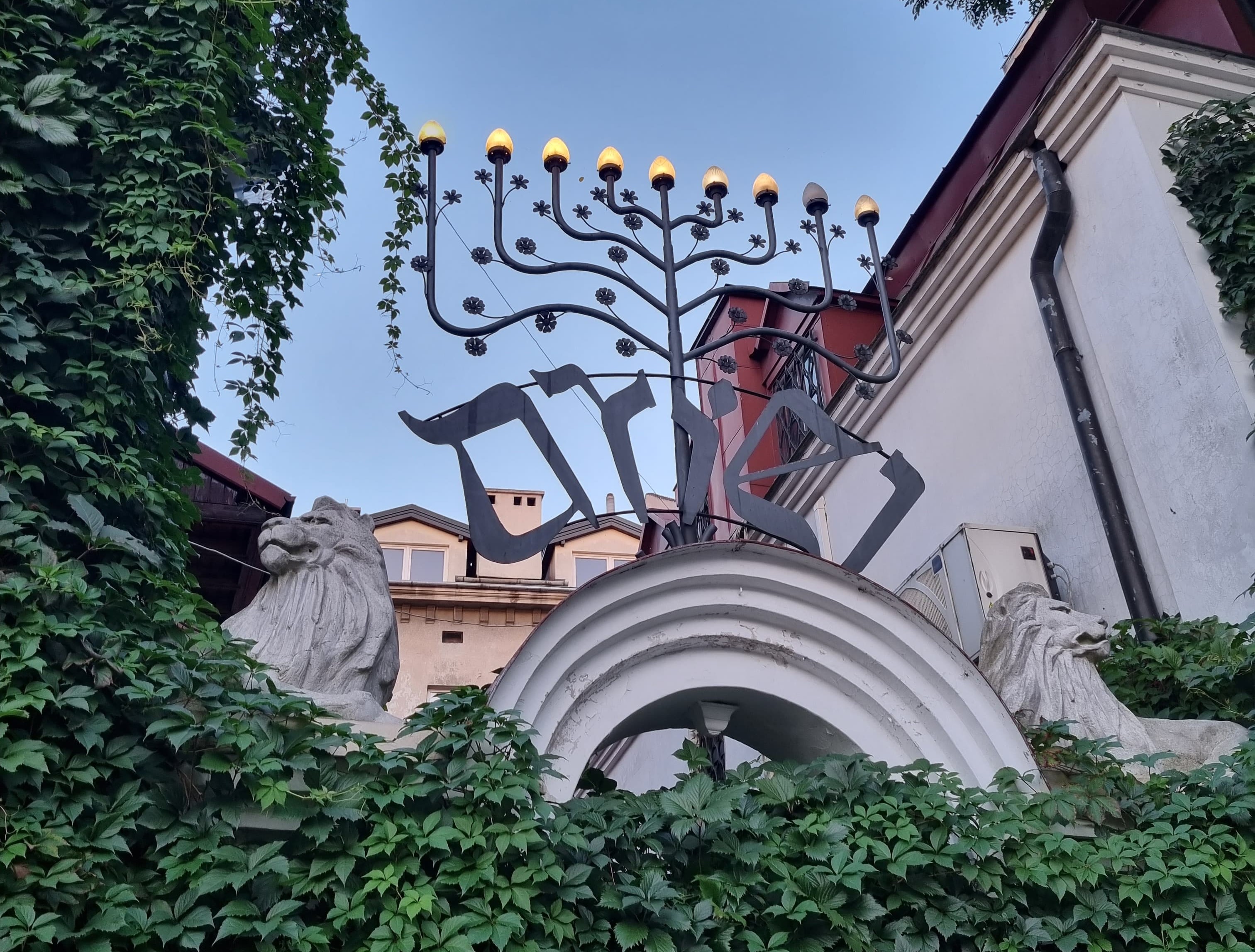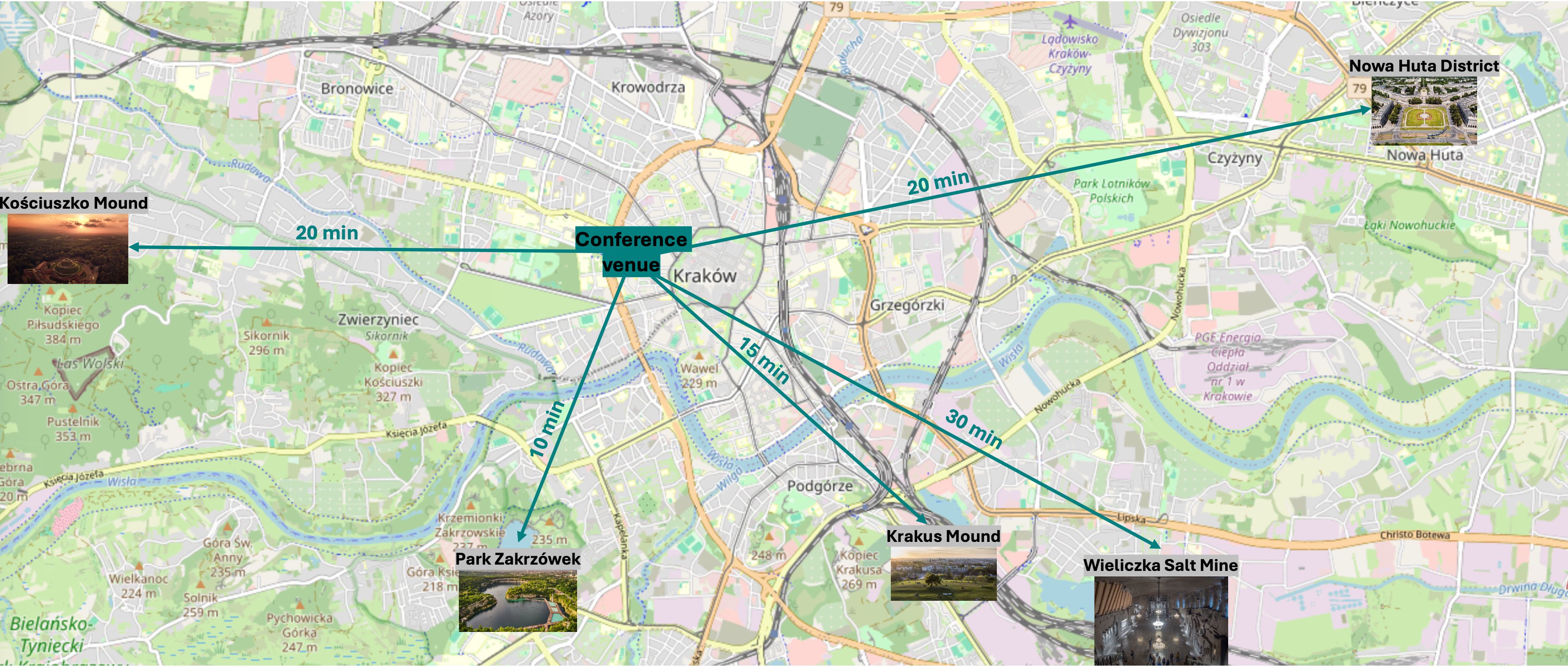

About Kraków
Krakow is today a dynamic and lively city of culture and science. The turbulent history of the region and the interpenetration of different nationalities living here for centuries have resulted in an extraordinary cultural heritage. The history of the city, its museums, monuments, and a variety of cultural events make Krakow a perfect location for visitors. While no longer the capital of Poland, it still provides the best offer for food, entertainment, and nightlife. Nearby spots like Wieliczka Salt Mine or the Tatra Mountains will undeniably enrich the travel experience.

 Author: Karol Nienartowicz
Author: Karol Nienartowicz
Jagiellonian University
Jagiellonian University, founded in 1364, is one of the oldest universities in the world. Named after the Jagiellonian dynasty, which reigned over Poland and Lithuania, the university has been a cradle of knowledge and intellectual achievement for centuries, shaping the minds of countless scholars, scientists, and leaders throughout its past.


Author: Anna Wojnar
Places to visit in Kraków
Kraków Main Square
A UNESCO World Heritage Site. Heart of the Krakow Old Town, that dates to the 13th century. Includes the Cloth Hall (Sukiennice), rebuilt in 1555 in the Renaissance style, the Town Hall Tower (Wieża ratuszowa), the 11th century Church of St. Adalbert, and 1898 Adam Mickiewicz Monument. Rising above the square are the Gothic towers of St. Mary's Basilica (Kościół Mariacki). 900 m from the venue (10 min on foot).

Source: Małopolska Organizacja Turystyczna
Wawel Royal Castle
A UNESCO World Heritage Site, the former residence of the kings of Poland, built in the 14th century, atop a limestone outcrop on the bank of the Vistula River. Part of larger architectural complex, including the Wawel Cathedral. Most visited art museum in Poland and the 20th most visited art museum in the world. ~1.5 km from the venue (6 min by trams: 8,13, 18, 72).

Author: Monika Towiańska (wiki)
Krakow Barbican & Brama Floriańska
A historic gateway leading into the Krakow Old Town, one of the few remaining relics of the complex network of fortifications and defensive barriers that once encircled the royal city of Krakow. ~1.5 km from the venue (20 min on foot).

Source: Małopolska Organizacja Turystyczna
Kazimierz District
Kraków’s historic Jewish district, a place where ethnic Polish and Jewish cultures coexisted and intermingled. Place where the Steven Spielberg’s Oscar-winning Schindler’s List was filmed. Today a charming mix of cafes, bars, and galleries, located amidst old sygagogues and churches. One of the key areas for Kraków’s nightlife. ~2 km the venue (10 min by tram 24).

Author: Agnieszka Adamczyk
Park Zakrzówek
An artificial water reservoir. It was created in 1992 after flooding an old limestone quarry. It consists of two reservoirs, connected by an isthmus. The shores of the lagoon are one of the favorite recreation spots of Krakow residents. ~ 4 km from the venue (10 min by bus 194, 494).

Source: Małopolska Organizacja Turystyczna
Kościuszko’s Mound
One of Kraków's four memorial mounds, erected in 1823, and located in Bielańsko-Tyniecki Park Krajobrazowy – a green recreational area in the centre of Krakow. Offers a beautiful panorama of Kraków and several Carpathian Mountain ranges. Easily reachable on foot by walking via Waszyngton Alley, among 19th century villas and old trees. ~ 3 km from the venue (20 min by buses 424 and 101; transfer required)

Source: Małopolska Organizacja Turystyczna
Krakus Mound
Located on the limestone Lasota Hill. Legend has it that it is the tomb of the pagan Prince Krak—the founder of Kraków. Offers a marvelous panoramic view of the city as well as excellent walking areas. Nearby you can also fina the Liban Quarry, where the Nazi labour camp was located, today, it is a place of rememberance and a nature sanctuary. ~4 km from the venue (15 min by trams: 13, 24, 72)

Source: Shutterstock
Nowa Huta
One of the largest planned socialist realist settlements or districts ever built (another being Magnitogorsk in Russia) and "one of the most renowned examples of deliberate social engineering" in the world. Built as a utopian ideal city, its street hierarchy, layout and grandeur of the buildings resemble cities of Paris or London. The high abundance of parks and green spaces makes it a green corner of Kraków. ~8 km from the venue (20 min by tram 4)

Author: Piotr Tomaszewski-Guillon (wiki)
Wieliczka Salt Mine
A UNESCO World Heritage Site, excavated from the 13th century, it is one of the world's oldest operating salt mines. Its attractions include the shafts and labyrinthine passageways, displays of historic salt-mining technology, an underground lake, four chapels and numerous statues carved by miners out of the rock salt, and more recent sculptures by contemporary artists. ~13 km from the conference venue (30 min by bus 304 or 20 min by the Fast Commuter Rail, line SKA1 from the Krakow Airport or the Main Railway Station).

Author: C messier (wiki)
Places to visit – walking distance

Places to visit – by public transportation

Krakow boasts beautiful classical Renaissance, Baroque, and Gothic architecture as well as unique Social Modernism buildings, which is a legacy of its communist past. It is home to dozens of stunning churches dating back to as eary as XII century, built in all types of architectural styles, and hiding painted glass and sculptural marvels. Krakow is also home to 82 museums. Some of them focus on city's magnificent past when it was Poland's capital, some on its more turbulent WWII history, some showcase artists' town-house flats with their original Polish Art Nouveau (Młoda Polska) furnishing and mystical XIX century paintings. You can also delve underground the Main Square to travel back to Krakow's Medieval times (entrance via the Cloth Hall) and visit museums of the Jagiellonian University, one of the oldests universitities in Europe. Fans of Leonardo da Vinci can find here "Lady With An Ermine" painting.

Places to visit outside of Krakow
Tatra National Park
Is around 1.5-2h away from Krakow. It offers great hiking experience, both easy and pretty demanding trails. To immerse more in the nature, stay overnight in one of the mountain huts.


Authors: Eszter Miller / pixabay | Kamilfoto / pixabay
Pieniny National Park
Beautiful landscapes of the Pieniny National Park with its rich regional culture and history of the region is just 1.5h away from Krakow.


Authors: Michał Zimniak / pixabay | Dariusz Staniszewski / pixabay
Useful links to plan your trip
Krakow city guide
Malopolska Region Tourist Guide
Młoda Polska: Art Nouveau in Krakow
The Times: Best things to do in Krakow